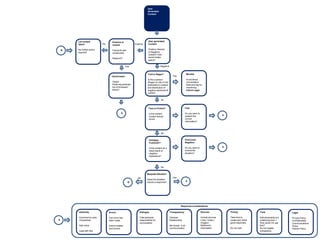Rj social media_policy_flow_chart_rev0
- 1. User Generated Content Let content stand B No further action required No Positive or neutral Positive User generated Content Positive, Neutral or Negative content? Own social media space? Factual & well constructed Respond? Negative Yes Troll or Rager? Good news! Monitor Yes Avoid direct conversation Note and tag for monitoring . Inform Legal Is this a person (Rager) or site (Troll) dedicated to creation and distribution of negative sentiment & content Thank! Positively endorse! Act of kindness? Share? No Fact or Fiction? Fact Is the content contact factual errors A Do you want to present the correct information? A No Unhappy Customer? Overcome Negation Is the content as a direct result of negative experience? Do you want to correct the situation? A No Bespoke Situation No B Does this situation require a response? Yes A Response considerations Authority A Errors Dialogue Transparency Sources Timing Tone Legal Comment on area of expertise If an error has been made Take personal responsibility for conversation Disclose Relationship Take time to create and check good responses. Add value Admit mistake and correct Include sources Links | Video | Images | Reference Information Add personality but underlying tone = How would XX say this?ŌĆØ Do not negate competitors Privacy Policy Confidentiality Communications Policy Partner Policy Lead with fact Be honest in all communication Do not rush.

